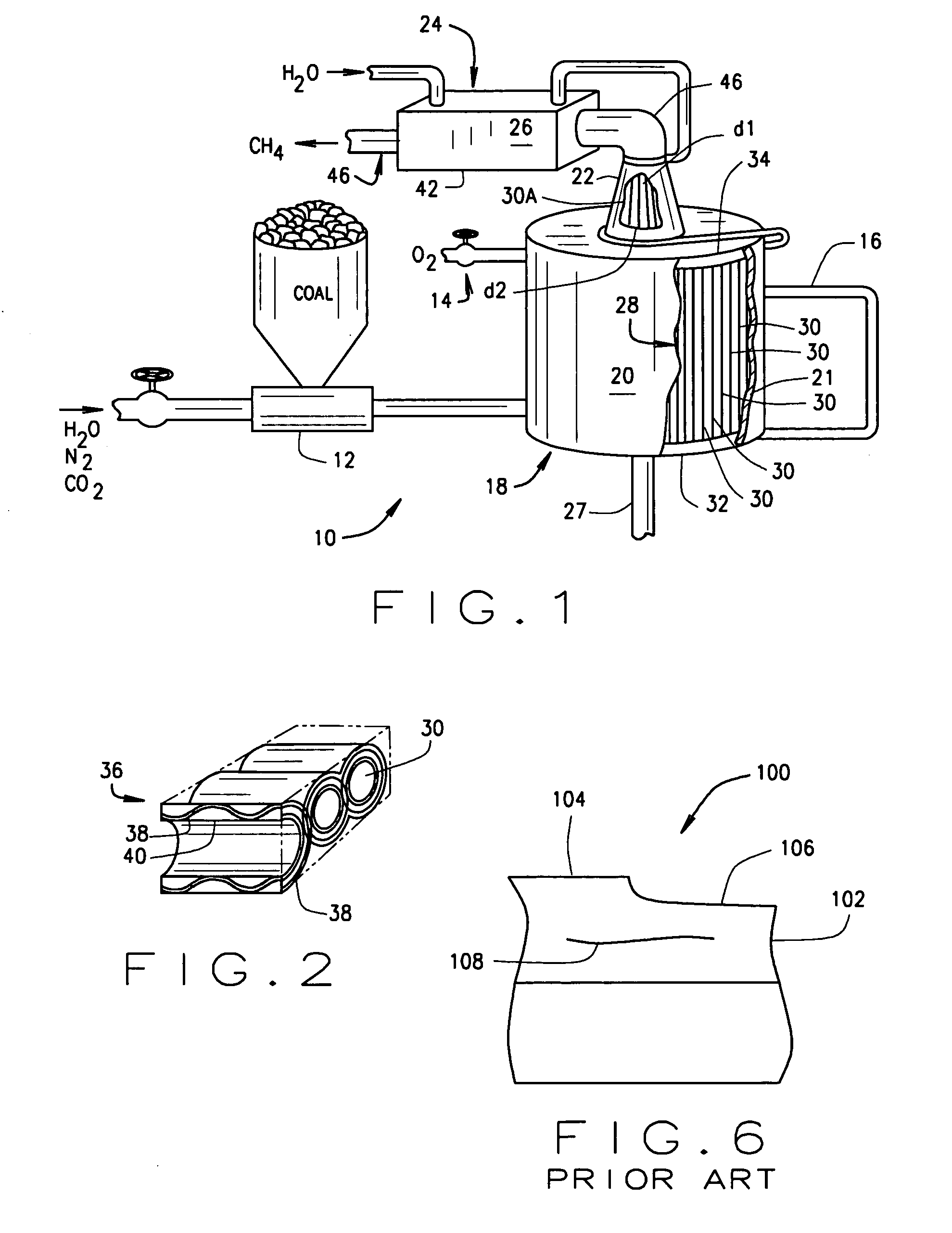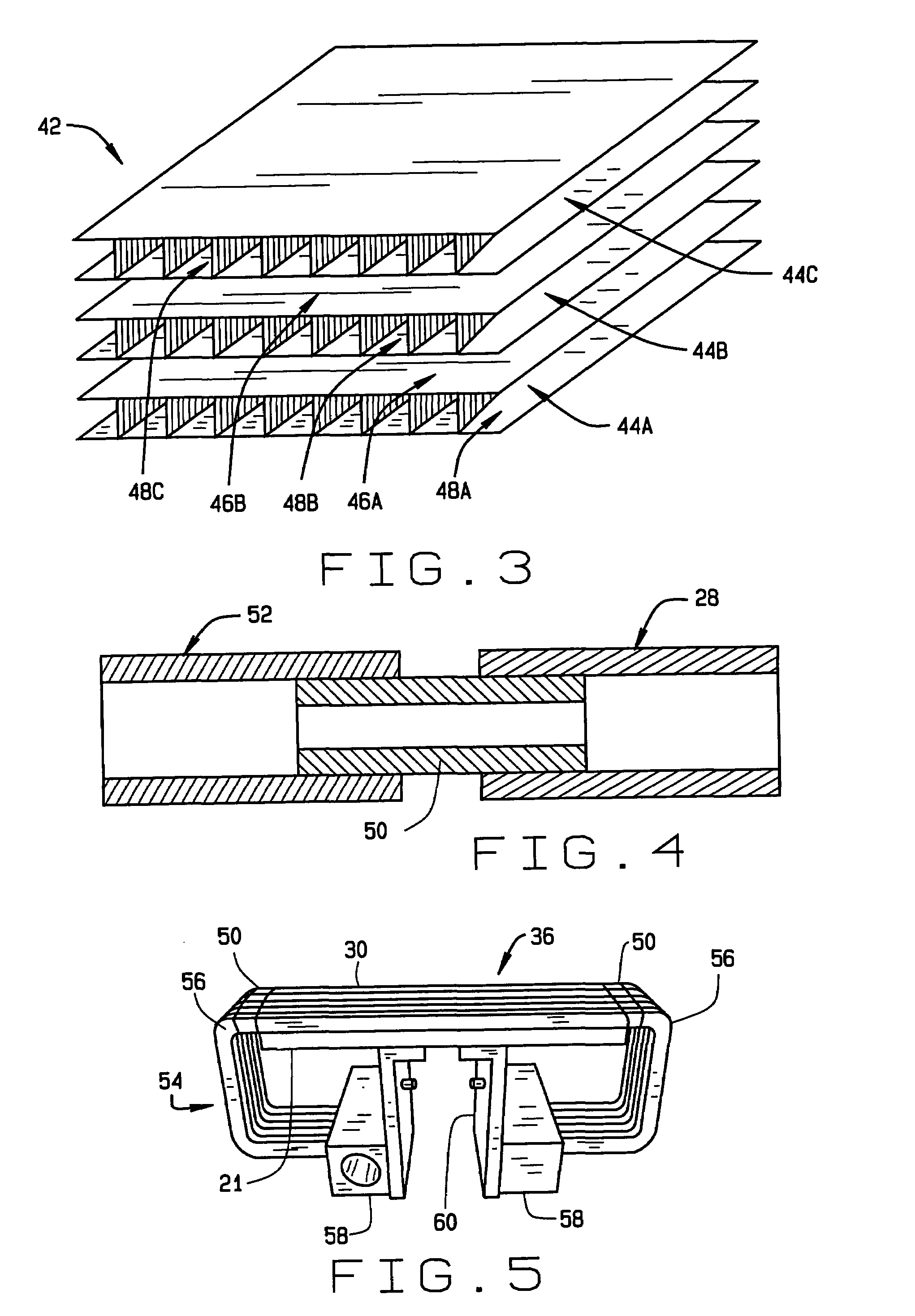Regeneratively cooled synthesis gas generator
a synthesis gas generator and regenerative cooling technology, which is applied in the mechanical details of gasifiers, furnaces, lighting and heating apparatuses, etc., can solve the problems of low efficiency and achieve the effects of low cost, high reliability and low cos
- Summary
- Abstract
- Description
- Claims
- Application Information
AI Technical Summary
Benefits of technology
Problems solved by technology
Method used
Image
Examples
Embodiment Construction
[0021]The following description of the preferred embodiment(s) is merely exemplary in nature and is in no way intended to limit the invention, its application, or uses.
[0022]As shown in FIG. 1, a synthesis gas system 10 in accordance within the principles of the present invention includes a source of coal 12, a source of air (or oxygen) 14, a source of water (superheated or saturated steam typically at about 700 degrees Fahrenheit) 16, a reactor 18 including a wall (or pressure vessel shell) 20, an exit nozzle 22, and a waste heat recovery section 24. While the reactor 18 shown is a coal gasifier, the gasifier will be referred to as a reactor to illustrate that the present invention is not limited to coal gasifiers. Pulverized coal may be carried into the reactor by a water, a nitrogen, or a carbon dioxide based slurry.
[0023]Within the reactor, the oxygen and a portion of the coal react to provide the heat necessary for the synthesis gas reaction in which the remainder of the coal i...
PUM
| Property | Measurement | Unit |
|---|---|---|
| thickness | aaaaa | aaaaa |
| temperature | aaaaa | aaaaa |
| surface temperatures | aaaaa | aaaaa |
Abstract
Description
Claims
Application Information
 Login to View More
Login to View More - R&D
- Intellectual Property
- Life Sciences
- Materials
- Tech Scout
- Unparalleled Data Quality
- Higher Quality Content
- 60% Fewer Hallucinations
Browse by: Latest US Patents, China's latest patents, Technical Efficacy Thesaurus, Application Domain, Technology Topic, Popular Technical Reports.
© 2025 PatSnap. All rights reserved.Legal|Privacy policy|Modern Slavery Act Transparency Statement|Sitemap|About US| Contact US: help@patsnap.com



